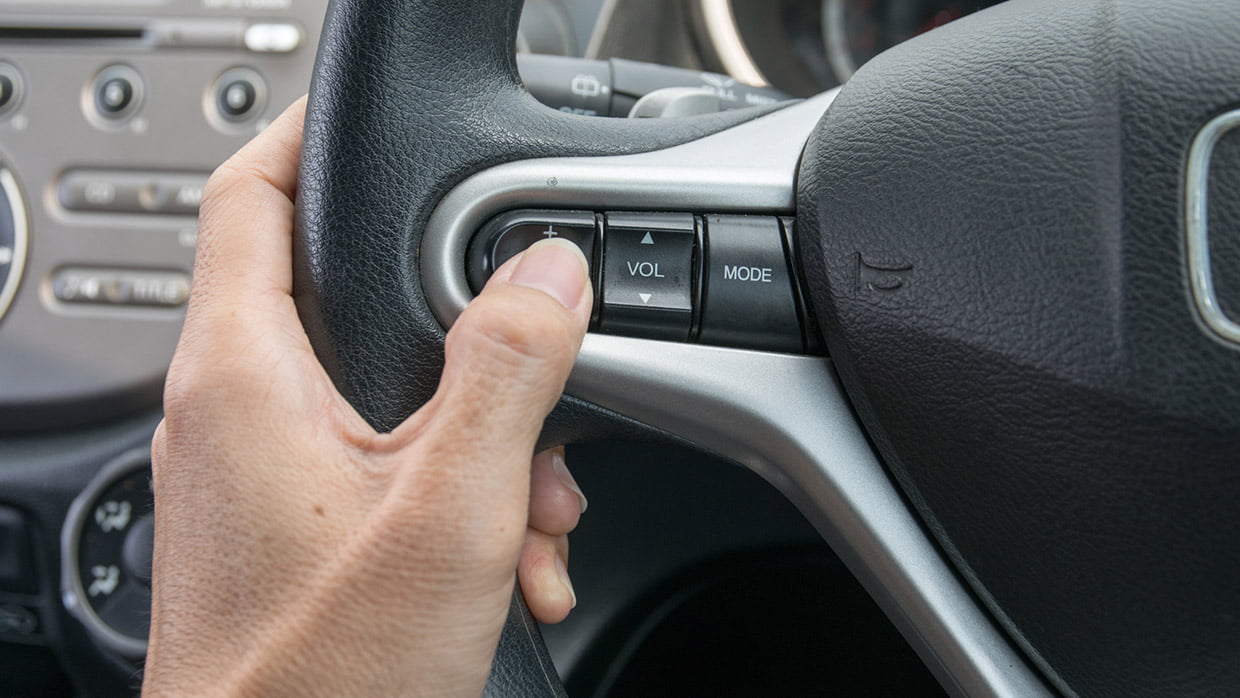A framework agreement offers the premise for the enterprise dating between a factory and a public business enterprise (Public). It consists of the phrases and requirements for a Public’s acquisition and possession of new car vehicle dealerships. Each factory has its own restrictions on a Public’s capacity to gather and perform its dealerships.
Most framework agreements are, via their own phrases, confidential. However, if one is waiting for promoting a dealership to a Public, it’d be sensible to become familiar with its framework agreement and how it would affect an ability sale.
When I began negotiating the sale of Lexus of Stevens Creek, a Public indicated it wanted to buy the dealership. However, it already owned four Lexus stores (the maximum allowed nationwide at the time). The Public instructed the factory it would sell one if it entered into a purchase-sell with my dealer; however, the manufacturing unit told them it had to sell one before putting a deal together.

The courting among Publics and factories has been a thrilling metamorphosis to look at. When Publics first got here on the scene, the factories kicked and screamed. Lawsuits had been filed, and the concept of public ownership of vehicle dealerships changed into vigorously adverse using the producers.
Later, the confrontational mindset subsided, and the factories embraced the Publics as a manner to update certain sellers and as a way to have new centers constructed. The glow got here off the relationships while some of the Publics did not perform the way the manufacturing facility wanted: terrible CSI, damaged guarantees, bad sales overall performance.
For the factories and the Public, the drafting of the authentic framework agreements changed into composing pre-nuptial agreements without being married or divorced. As the factories learned from revel in, the agreements had been massaged and changed.
Several years in the past, while supporting achieve the first manufacturing facility acclaim for an Indian Nation to emerge as a supplier, a common Sales and Service Agreement turned into now not ok to cover the distinctiveness of the tribes, and adjustments had to be made.
The factory knew a way to cope with massive dealership corporations, both public and private; however, how does one transact business with a Sovereign Nation (a Native American tribe) that has immunity from lawsuits and does no longer ought to pay taxes? Many problems had to be addressed (with the manufacturing facility, the state dealer affiliation, and the promoting dealer). In hindsight, much like the Publics’ framework agreements, many anticipated issues were imaginary, and some had been ignored.
Publics are rated daily in step with the marketplace price of their inventory, which cost, after they first commenced shopping for dealerships, became affected dramatically to increase the income extent of the organizations thru the acquisition of latest dealerships.
Dealers, alternatively, are rated via how matters flip out when the sport is over, and they promote their stores. Consequently, whilst it might be good for a Public to sell hypothetical dealership belongings to a REIT (Real Estate Investment Trust), it may or won’t be wise for a non-public supplier to sell that identical property although given the same phrases, or vice-versa.
Privates and Publics have different rules and specific reasons and, for my part, until currently, some Publics did not suppose they needed to act very just like dealers. However, with the sluggish-down of their acquisitions, Publics have had to act extra like dealers and get the most out of each saves. As maximum sellers would agree, the task of successfully operating a car dealership is appreciably extra hard than shopping for one with a person else’s money.
In the long run, I accept as true with framework agreements are suitable because they maintain the Publics from controlling too fantastic a percentage of the distribution channels of producers, even as simultaneously forcing them to perform extra like vehicle sellers.
Although framework agreements are redefined at instances, at one time or some other, the subsequent factories had the following requirements:
TOYOTA/LEXUS
1. Had a restrict at the range of Toyota and Lexus dealerships that a Public may additionally personal: (a) on a countrywide degree; (b) in each Toyota-described geographic area or distributor region; and (c) in each Toyota or Lexus-defined metropolitan marketplace.
2. Prohibited ownership of contiguous dealerships within the equal market.
3. Nationally, the constraints on dealerships owned were for particular time periods and based totally on certain chances of overall Toyota unit sales in the United States.
4. In geographic regions or distributor areas, the constraints on dealerships owned by Publics have been unique by the relevant Toyota nearby obstacles policy or distributor’s coverage in effect at such time.
5. In metropolitan markets, the limitations on dealerships owned with the aid of Publics were primarily based on Toyota’s metro markets dilemma policy then in impact, which furnished a predicament primarily based on the entire variety of Toyota dealerships in the precise market.
With appreciation to Lexus, a Public should own no a couple of Lexus dealerships in any one Lexus-defined metropolitan marketplace and no more than 5 Lexus dealerships nationally.
HONDA
1. Honda confined the wide variety of Honda and Acura dealerships a Public should own (a) on a countrywide degree; (b) in every Honda and Acura-described geographic area; and (c) in every Honda-described metropolitan market.
2. Nationally, the limitations on Honda dealerships owned by Publics have been based on specified percentages of overall Honda unit income within the United States.
3. In Honda-described geographic zones, the restrictions on Honda dealerships owned by Publics were primarily based on specific chances of general Honda unit income in every 10 Honda-defined geographic zones.
4. In Honda-described metropolitan markets, the restrictions on Honda dealerships owned by way of Publics have been specific numbers of dealerships in every market. Numerical limits varied based especially on the whole range of Honda dealerships in a selected marketplace.
5. Concerning Acura, Publics may want to very own no extra than (a) two Acura dealerships in a Honda-defined metropolitan marketplace, (b) 3 Acura dealerships in any one of six Honda-defined geographic zones, and (c) 5 Acura dealerships nationally.
6. Honda also prohibited ownership of contiguous dealerships.
MERCEDES-BENZ
Mercedes restricted any organization from owning Mercedes dealerships with sales of extra than 3% of the total income of Mercedes cars in the U.S. All through the preceding calendar 12 months.
FORD MOTOR COMPANY
1. 80% of the Public’s Ford dealerships needed to meet Ford’s performance standards.
2. Could now not make an acquisition that would result in owning Ford or Lincoln Mercury dealerships with sales exceeding five% of the full Ford or general Lincoln Mercury retail income of latest motors in the United States for the preceding calendar year.
3. Could no longer collect extra Ford or Lincoln Mercury dealerships in a specific state if such an acquisition could bring about the general public organization proudly owning Ford or Lincoln Mercury dealerships with income exceeding 5% of the full Ford or overall Lincoln Mercury retail income of recent automobiles in that state for the previous calendar yr.
4. Could no longer acquire additional Ford dealerships in a Ford-described market vicinity if such an acquisition brought about the Public owning multiple Ford dealership in a marketplace having a total of 3 or much fewer Ford dealerships or owning greater than 25% of the Ford dealerships in a marketplace having a complete of four or greater Ford dealerships. An identical marketplace location restriction applies for Lincoln-Mercury dealerships.
Five. The factory should impose conditions, consisting of requiring facilities upgrades on the obtained dealership.
GENERAL MOTORS
General Motors constrained the maximum wide variety of General Motors dealerships that a Public could collect to 50% of the General Motors dealerships, through emblem line, in a General Motors-described geographic marketplace vicinity having a couple of General Motors dealers.
SUBARU
Subaru limited Publics to (a) no greater than Subaru dealerships inside sure distinctive market regions; (b) 4 Subaru dealerships within its Mid-America place; and (c) 12 dealerships inside Subaru’s complete location of the distribution.
BMW
BMW prohibited publicly held companies from owning BMW dealerships representing (a) greater than 10% of all BMW income inside the U.S. Or (b) extra than 50% of BMW dealerships in a given metropolitan marketplace. Other producers may additionally impose different restrictions and conditions, which may additionally or might not be extra stringent. As a circumstance to granting their consent to acquisitions, some of the producers required extra regulations or conditions, consisting of prohibiting:

1. Material changes in the Public or exceptional company transactions such as a merger, sale of a fabric amount of property or trade inside the Public’s board of administrators or control that might have a cloth destructive impact on the producer’s photograph or recognition or can be materially incompatible with the producer’s pastimes.
2. The elimination of a dealership standard manager without the consent of the manufacturer.
3. Dealing with every other logo without the manufacturing facility’s consent.
If a client can not follow the restrictions of its framework settlement with the manufacturing facility, it’ll not be accepted. Consequently, if one intends to sell a dealership to a Public, it’d be wise to know the necessities of its framework settlement earlier than investing a substantial quantity of time and electricity into negotiating with the Public.
Mr. Pico served as a courtroom appointed “Consultant to Debtor” in financial disaster instances, a “Court Appointed Mediator” in automotive disputes, the “Court Appointed Arbitrator / Appraiser” in partnership disputes, a “Court Approved Consultant to Receiver” in a check-kiting case, as a “Superior Court Mediator” in dealership/lender litigation and has been identified as an expert witness on both State and Federal tiers.
He has consulted on upside-down positions of over $50 Million, out of believing the role of over $4 Million and a financial institution overdraft of $30 Million. Since 1972, Mr. Pico has finished over 1,000 automobile dealership transactions, whose blended values exceed One Billion Dollars.
Read Full Article



















































